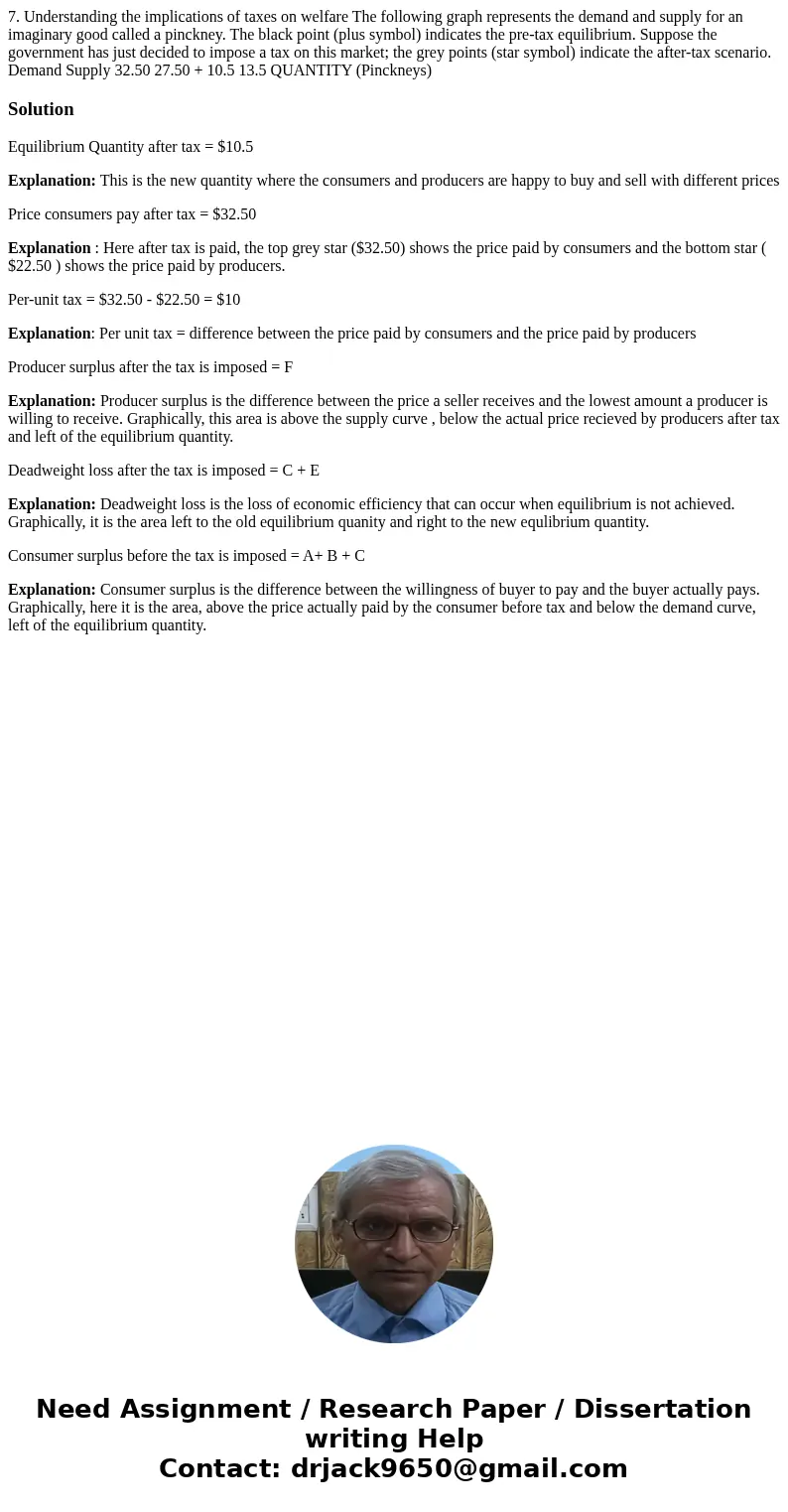7 Understanding the implications of taxes on welfare The fol
Solution
Equilibrium Quantity after tax = $10.5
Explanation: This is the new quantity where the consumers and producers are happy to buy and sell with different prices
Price consumers pay after tax = $32.50
Explanation : Here after tax is paid, the top grey star ($32.50) shows the price paid by consumers and the bottom star ( $22.50 ) shows the price paid by producers.
Per-unit tax = $32.50 - $22.50 = $10
Explanation: Per unit tax = difference between the price paid by consumers and the price paid by producers
Producer surplus after the tax is imposed = F
Explanation: Producer surplus is the difference between the price a seller receives and the lowest amount a producer is willing to receive. Graphically, this area is above the supply curve , below the actual price recieved by producers after tax and left of the equilibrium quantity.
Deadweight loss after the tax is imposed = C + E
Explanation: Deadweight loss is the loss of economic efficiency that can occur when equilibrium is not achieved. Graphically, it is the area left to the old equilibrium quanity and right to the new equlibrium quantity.
Consumer surplus before the tax is imposed = A+ B + C
Explanation: Consumer surplus is the difference between the willingness of buyer to pay and the buyer actually pays. Graphically, here it is the area, above the price actually paid by the consumer before tax and below the demand curve, left of the equilibrium quantity.

 Homework Sourse
Homework Sourse